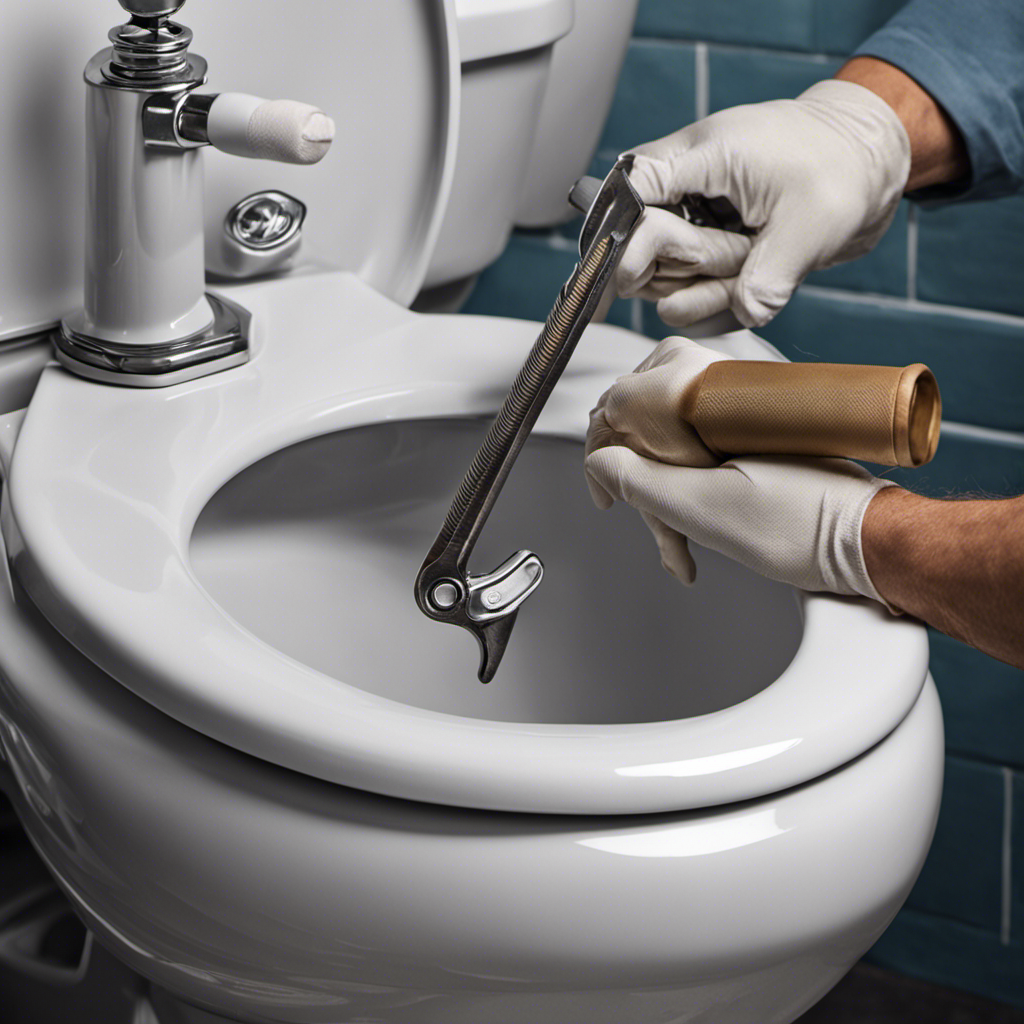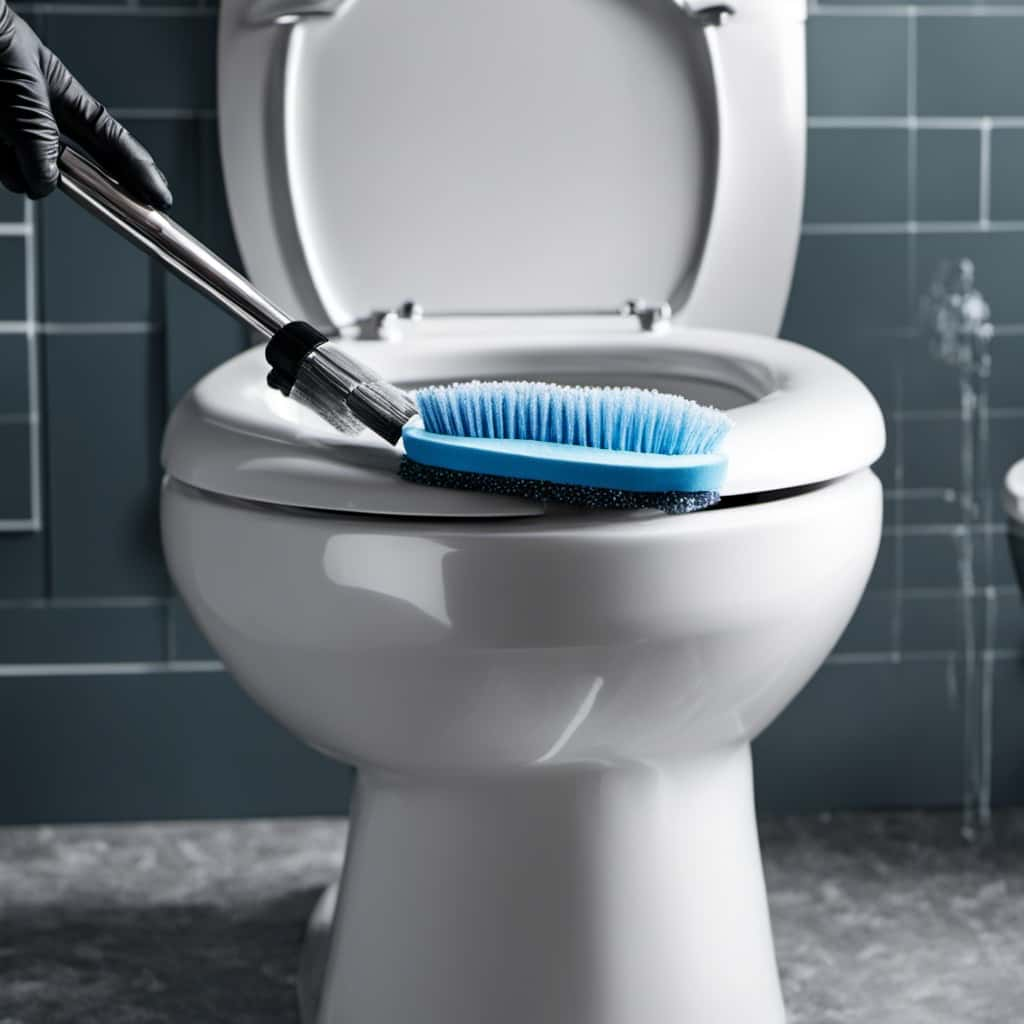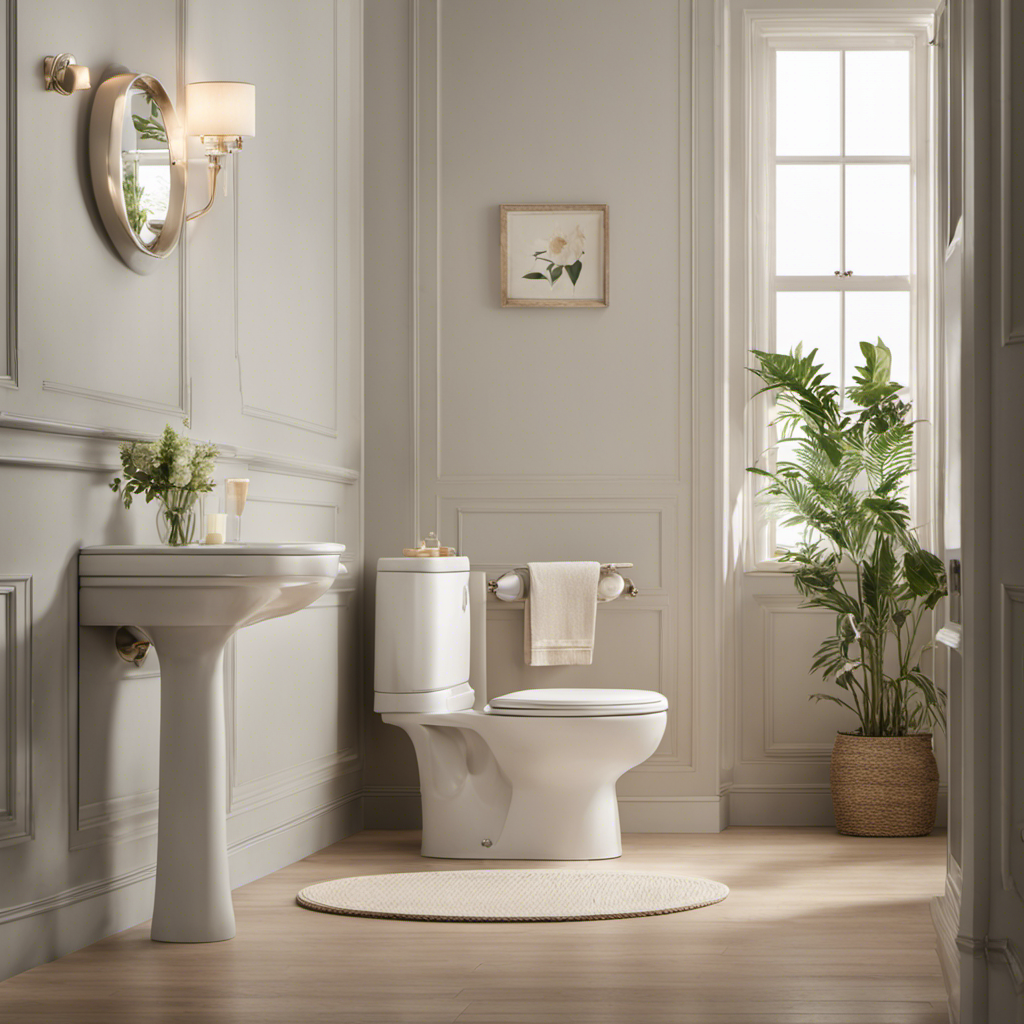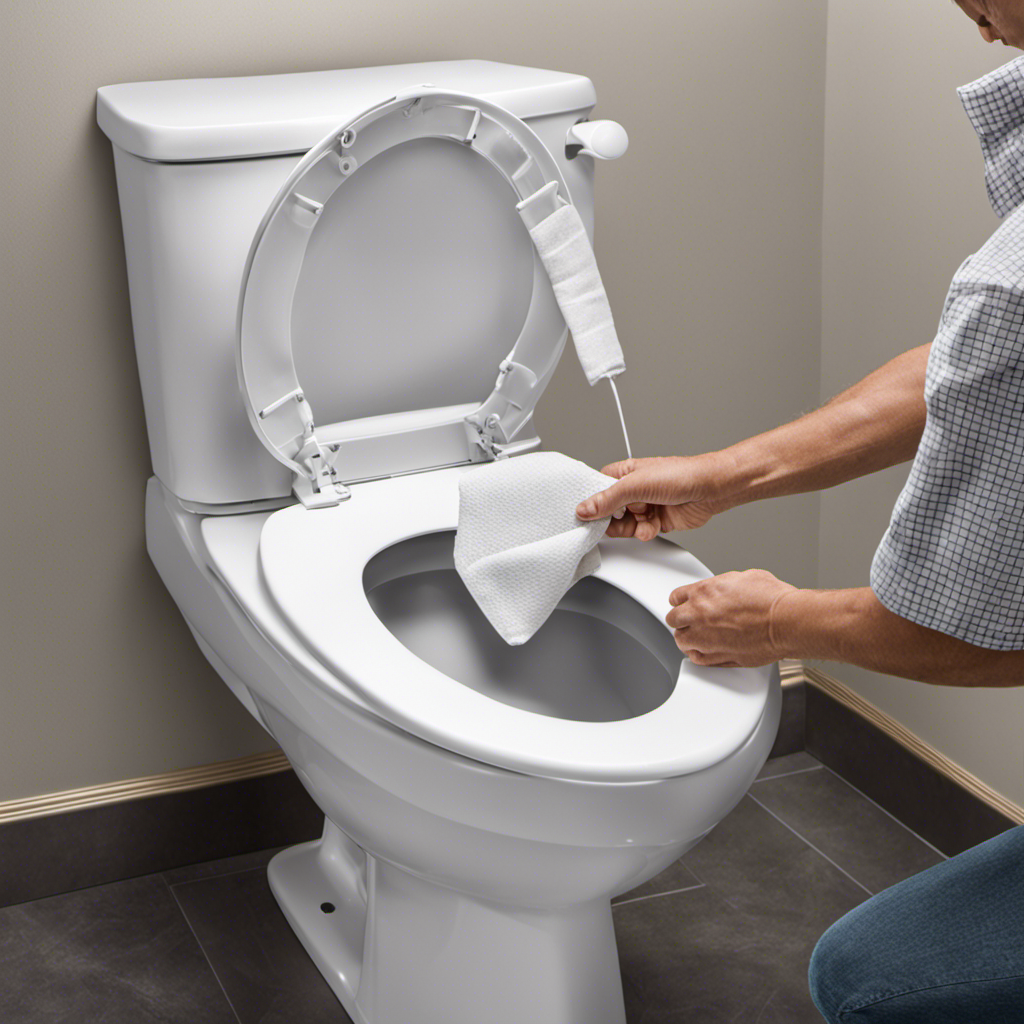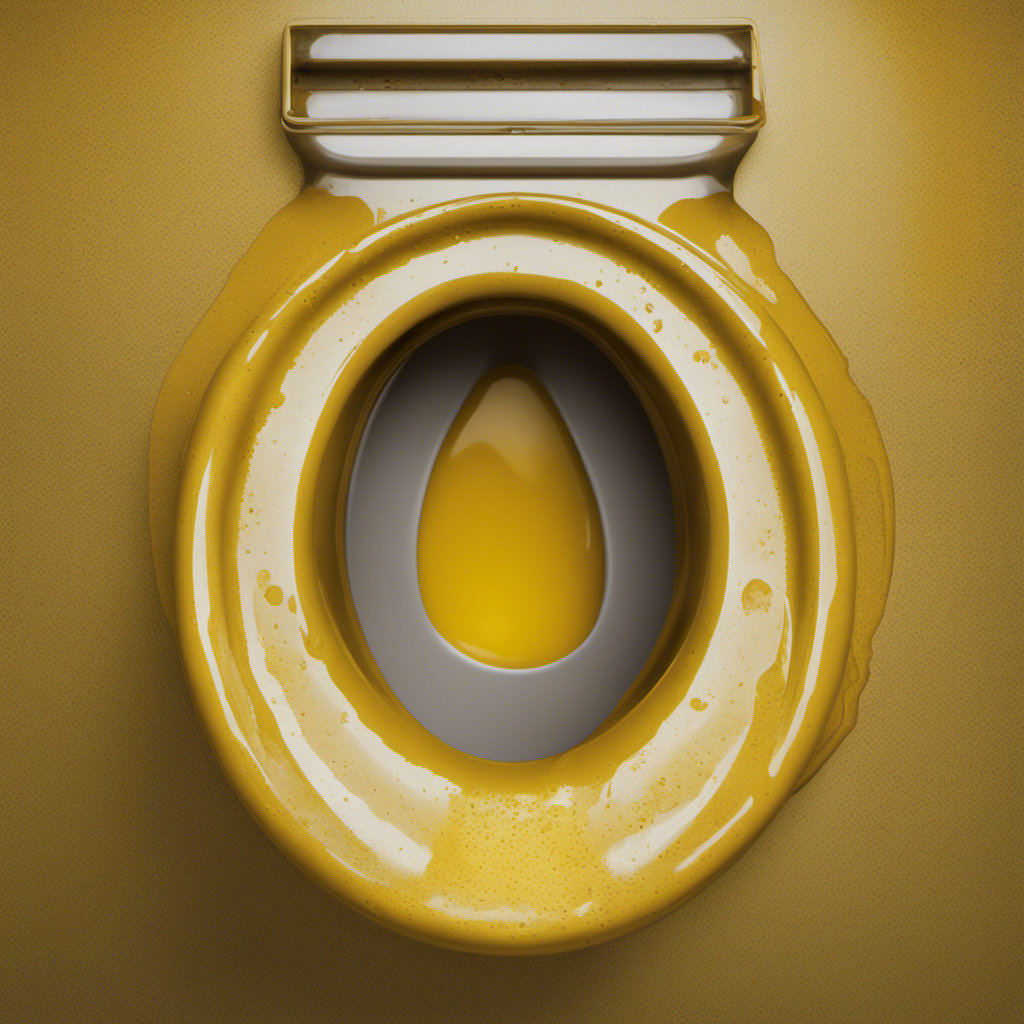I’ve always dreamed of a world without litter boxes, where my cat and I could peacefully share a bathroom. Well, that dream became a reality when I successfully trained my cat to use the toilet.
If you’re tired of constantly cleaning up after your feline friend, then this article is for you. In this step-by-step guide, I’ll walk you through the process of toilet training your cat, providing you with all the essential information and tips you need to make this dream a reality.
Key Takeaways
- Toilet training eliminates the need for a litter box.
- Positive reinforcement and consistency are crucial for successful training.
- Gradual transition and patience are key to introducing the cat to the toilet.
- Troubleshoot common challenges such as litter box aversion and accidents calmly and promptly.
Benefits of Toilet Training for Cats
Toilet training your cat has many benefits. It eliminates the need for a litter box and reduces odor in your home. There are several advantages of using the toilet for cats. Firstly, it saves you the hassle of constantly cleaning and changing the litter box. Secondly, it can be more hygienic as there is no contact with the waste. Lastly, it saves you money as you no longer need to purchase litter regularly.
When it comes to training techniques for cats to use the toilet, it is important to be patient and consistent. Gradually introduce your cat to the toilet by placing a litter box next to it. Then, gradually elevate the litter box until it is level with the toilet seat. With time and positive reinforcement, your cat can learn to use the toilet like a pro.
Now, let’s move on to understanding the basics of cat toilet training.
Understanding the Basics of Cat Toilet Training
Understanding the basics of how cats can be trained to go potty in a different place is crucial. Here are some key cat toilet training techniques to help you get started:
-
Gradual transition: Start by moving your cat’s litter box closer to the toilet over time. This will help them get comfortable with the new location.
-
Use a training seat: Invest in a cat training seat that fits securely on top of your toilet bowl. This will help your cat associate the toilet with their bathroom routine.
-
Positive reinforcement: Reward your cat with treats and praise every time they use the toilet successfully. This will encourage them to repeat the behavior.
-
Patience and consistency: Understand that cat toilet training takes time and patience. Consistency is key, so stick to a routine and avoid making sudden changes.
Avoid these common mistakes in cat toilet training:
-
Rushing the process: Cats need time to adjust, so rushing the training can lead to anxiety and accidents.
-
Punishing mistakes: Punishment will only create fear and confusion. Instead, focus on positive reinforcement and redirecting unwanted behavior.
-
Neglecting hygiene: Clean the toilet regularly to ensure a clean and inviting environment for your cat.
-
Giving up too soon: Cat toilet training can be challenging, but don’t give up. Stay committed and you’ll eventually see results.
Essential Supplies and Preparation for Cat Toilet Training
Before starting the training process, it’s important to gather the necessary supplies and prepare your home accordingly.
One of the key supplies you’ll need is a special cat toilet training kit, which typically includes a training seat that fits over your existing toilet, along with training discs or litter that gradually transitions your cat to using the actual toilet bowl.
Additionally, you’ll want to have a litter box available as a backup in case your cat needs to relieve themselves during the training process.
It’s also crucial to make sure your bathroom is set up for success by removing any rugs or mats that your cat may confuse with a litter box, and ensuring that the toilet seat is always left up during training.
Step-by-Step Guide to Introducing Your Cat to the Toilet
Once you have gathered the necessary supplies, it’s time to introduce your feline friend to the new training process. Here is a step-by-step guide to help you with the process:
-
Start by placing the cat litter box next to the toilet to get your cat used to its presence.
-
Gradually raise the height of the litter box by placing sturdy objects underneath it, such as books or platforms.
-
Once your cat is comfortable using the litter box at a higher level, transition to a special cat toilet training seat that fits over the toilet bowl.
-
Encourage your cat with rewards, such as treats or praise, each time they successfully use the toilet.
Remember to maintain consistency throughout the training process. Keep the litter box clean and accessible, and provide positive reinforcement consistently.
With patience and perseverance, your cat will eventually become comfortable using the toilet as their new bathroom spot.
Troubleshooting Common Challenges in Cat Toilet Training
When it comes to cat toilet training, two common challenges that cat owners often face are overcoming litter box aversion and dealing with accidents.
Litter box aversion can be caused by various factors such as the type of litter, the location of the litter box, or even underlying medical issues. To overcome this, it’s important to identify and address the root cause of the aversion while providing a clean and comfortable litter box environment.
Additionally, accidents may occur during the training process, but it’s crucial to respond calmly and clean up the mess promptly using appropriate cleaning products to prevent repeat incidents.
Overcoming Litter Box Aversion
To help your cat overcome litter box aversion, try using a different litter or providing multiple litter box options. Litter box aversion can be caused by factors like litter texture, scent, or location. Here are some practical tips to overcome this issue:
-
Experiment with different types of litter: Some cats prefer clumping litter, while others prefer non-clumping or natural alternatives like pine pellets or recycled paper.
-
Keep the litter box clean: Cats are clean animals, and a dirty litter box can discourage them from using it. Scoop the litter box daily and change the litter regularly.
-
Provide multiple litter box options: Some cats prefer separate litter boxes for urinating and defecating. Try placing multiple litter boxes in different locations to see if it helps.
-
Consider litter box placement: Make sure the litter box is placed in a quiet and easily accessible area. Avoid placing it near loud appliances or in high traffic areas.
Dealing With Accidents
Dealing with accidents can be frustrating, but it’s important to stay patient and consistent with your cat’s litter box training. Sometimes, despite our best efforts, accidents happen. When they do, it’s crucial to clean up the mess promptly and thoroughly.
Start by removing any solid waste and blotting up any urine with paper towels. Then, use an enzymatic cleaner specifically designed for pet accidents to eliminate any lingering odors. This will help prevent your cat from being attracted back to the same spot.
To prevent future accidents, make sure to keep the litter box clean and easily accessible for your cat. Regularly scoop the box and change the litter. Additionally, consider placing multiple litter boxes in different areas of your home to provide convenient options for your cat.
Gradually Transitioning Your Cat From Litter Box to Toilet
Start by slowly introducing your cat to the toilet as a new place to go potty. Here are some helpful techniques to make this transition smoother:
-
Gradual exposure: Place the litter box near the toilet and gradually raise it over time, until it reaches the same height as the toilet seat.
-
Add the toilet seat insert: Once your cat is comfortable with the raised litter box, start using a toilet seat insert with a hole in the middle. This helps your cat associate the toilet with their bathroom area.
-
Remove the litter box: Once your cat is consistently using the toilet with the seat insert, remove the litter box completely. This encourages them to use the toilet exclusively.
-
Celebrate success: Be sure to provide positive reinforcement, such as treats and praise, whenever your cat successfully uses the toilet. This helps reinforce the desired behavior.
Toilet training can be a challenging process, but with patience and consistency, many cat owners have achieved great success. Don’t be discouraged by setbacks, and remember to celebrate each step forward in your cat’s toilet training journey.
Frequently Asked Questions
Can I Toilet Train My Cat if They Are Already Fully Grown?
Yes, you can toilet train your cat if they are already fully grown. However, it’s important to consider any medical conditions or behavioral issues they may have, as these can affect the training process.
How Long Does It Typically Take to Fully Train a Cat to Use the Toilet?
Typically, training a cat to use the toilet takes time and patience. The average training time varies, but common challenges include getting the cat comfortable with the toilet and teaching them to balance.
Can I Use Any Type of Litter for the Transition Process?
I can use any type of litter for the transition process, but consistency is key. It’s important to stick with the same litter throughout the training to avoid confusion and help my cat adjust.
What Do I Do if My Cat Refuses to Use the Toilet After Several Weeks of Training?
If my cat refuses to use the toilet after weeks of training, I’d try to address any anxiety they may have by creating a calm environment. Remember, the benefits of toilet training for both cats and owners are worth the effort!
Is It Possible for My Cat to Revert Back to Using a Litter Box After Being Trained to Use the Toilet?
It’s possible for a cat to revert to using a litter box after being trained to use the toilet. Some cats may face challenges with toilet training, leading them to go back to their previous habits.
Conclusion
Well, after all that hard work, patience, and determination, your cat is now a toilet-using pro!
Who would have thought that you could train a cat to do such a human task? But hey, anything is possible, right?
Now you can proudly boast to your friends about your feline’s impressive bathroom skills. Just make sure to remind them that it’s not as easy as it looks and not every cat is up for the challenge.
But hey, we did it! Enjoy your litter-free life!

